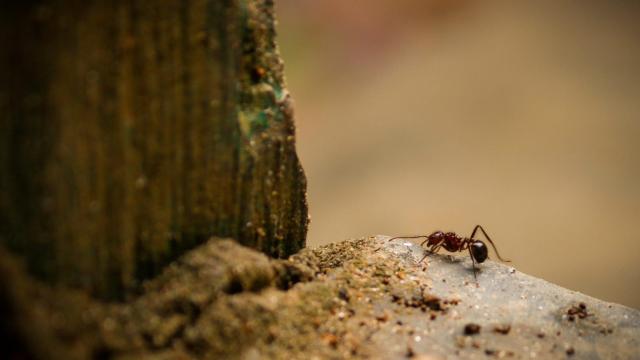One day, you’re sitting in your living room watching TV or reading a book, and suddenly see something out of the corner of your eye. It was tiny, dark-coloured, and fast, but you didn’t get a good look at it. You spot another one and track it across the room until you discover a whole colony of these insects living rent-free in your home.
Before you can start to deal with them, you first have to figure out what they are. You suspect either ants or termites, but are unsure which is which. Given that they’re two different creatures that cause different types of damage, it’s a good idea to find out a little bit more about your new roommates. In an article for BobVila.com, Melissa Graham breaks down the differences between ants and termites, including when it’s time to call in a professional.
How to tell the difference between ants and termites
Let’s start with their physical appearances. Here are some of the key differences between ants and termites, courtesy of Graham:
Colour
You’ve probably seen ants at some point, and know that they’re pretty dark in colour — either a deep red, brown, or black. Termites, on the other hand, are translucent and light-coloured or white.
Antennae
If you’re able to get up close enough to these insects to see their antennae, that will also offer a clue as to which insect you’re dealing with. That’s because ants have elbowed or bent antennae, while termites have straight antennae, Graham explains.
Bodies
Society has us conditioned to look at — and then judge — other people’s bodies, and now it’s time to put that skill to use on bugs. A termite’s abdomen doesn’t have a defined waist, while ants have well-defined waists and more rectangular bodies, according to Graham.
Wings
To make things a little trickier, there are types of both insects that can fly, and each has four wings. Here’s Graham with more details:
Termites have wings that are equal in length and are longer than their bodies, while flying ants’ wings are unequal in length. An ant’s back hind wings are shorter than its front fore wings, and they are pretty proportional to their bodies. Termites also have very fragile wings that can fall off easily, and if you see fallen wings in your home, this can sometimes indicate an infestation.
Places you’ll find ants or termites
Another clue as to which insect you’re dealing with, is where you find it.
Out in the open, in broad daylight
Termites tend to avoid light, Graham explains. So unless you’re on a mission dedicated to finding them outdoors, you probably haven’t seen them outside. Ants, on the other hand, aren’t shy, and you’ve likely seen them crawling around outdoors, and/or at picnics (both real and in cartoons).
Near food or wood
One of the key differences between ants and termites is their diets. Ants aren’t picky eaters: They feed on plants, animals, and any food waste or debris. They can often be seen on kitchen counters (especially when there’s food left out), crawling around garbage cans, and surrounding pet food dishes.
Termites, on the other hand, only consume things that are rich in cellulose, like wood and paper, Graham says. So instead of finding them near sources of human food, you’re more likely to spot them in drywall, cardboard, insulation, wood, and other stuff with that tasty cellulose.
And if you find wood damage in your home — especially piles of sawdust or wood pellets — and suspect insects, there’s a good chance that you’re dealing with termites. Ants typically don’t cause wood damage.
How to get rid of ants and termites
Run-of-the-mill house ants, for the most part, are something you’re able to take care of yourself. (Here’s how to do that.) But if you suspect that you’re dealing with fire or carpenter ants, Graham says that you might want to consider getting a professional to asses the situation. Similarly, because of the structural damage that termites can cause (which isn’t always noticeable), it’s also best to consult a professional if you think those home-wreckers have moved in with you.

Leave a Reply
You must be logged in to post a comment.